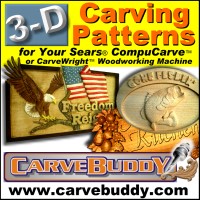A wash is a painting technique in which a paint brush that is very wet with solvent and holds a small paint load is applied to a wet or dry support such as paper or primed or raw canvas. The result is a smooth and uniform area that ideally lacks the appearance of brush strokes and is semi-transparent. The drybrush technique can be considered the opposite of a wash.
A wash is accomplished by using a large amount of solvent with little paint. Paint consists of a pigment and binder which allows the pigment to adhere to its support. Solvents dilute the binder, thus diluting the binding strength of the paint. Washes can be brittle and fragile paint films because of this. However, when gum arabic watercolor washes are applied to a highly absorbant surface, such as paper, the effects are long lasting. This is the reason why watercolor is the medium most often utlizing washes.
The wash technique can be achieved by doing the following:
With water-based media such as inks, acrylic paints, tempera paints or watercolor paints, a wet brush should be dipped into a pool of very wet and diluted paint. This paint pool should be evenly mixed and dispersed to prevent uneven pigment load on the brush. The loaded brush should then be applied to a dry or wet support. Washes are most often applied with large brushes over large areas. The areas in which a wash effects can be controlled with careful application of the wash, and with the use of liquid frisket or rubber cement.
With oil-based media such as oil paint, a similar technique as outlined above may be used, though instead of water the paint pool should be well diluted in solvent, such as turpentine or mineral spirits. The loaded brush should be applied to a dry or solvent soaked support. Because oil paint has a longer drying time than water-based media, brushing over or blending a wash can extend or even out the appearance of the wash. American artists Jackson Pollock, Mark Rothko, Morris Louis, Sam Francis, Paul Jenkins, Helen Frankenthaler, Jules Olitski, Friedel Dzubas, Ronnie Landfield and several others are famous for creating washy, watercolor-like effects in oil and acrylic paintings in distinctive and radical styles and versions of this method, and which is sometimes called stain painting.
A wash is accomplished by using a large amount of solvent with little paint. Paint consists of a pigment and binder which allows the pigment to adhere to its support. Solvents dilute the binder, thus diluting the binding strength of the paint. Washes can be brittle and fragile paint films because of this. However, when gum arabic watercolor washes are applied to a highly absorbant surface, such as paper, the effects are long lasting. This is the reason why watercolor is the medium most often utlizing washes.
The wash technique can be achieved by doing the following:
With water-based media such as inks, acrylic paints, tempera paints or watercolor paints, a wet brush should be dipped into a pool of very wet and diluted paint. This paint pool should be evenly mixed and dispersed to prevent uneven pigment load on the brush. The loaded brush should then be applied to a dry or wet support. Washes are most often applied with large brushes over large areas. The areas in which a wash effects can be controlled with careful application of the wash, and with the use of liquid frisket or rubber cement.
With oil-based media such as oil paint, a similar technique as outlined above may be used, though instead of water the paint pool should be well diluted in solvent, such as turpentine or mineral spirits. The loaded brush should be applied to a dry or solvent soaked support. Because oil paint has a longer drying time than water-based media, brushing over or blending a wash can extend or even out the appearance of the wash. American artists Jackson Pollock, Mark Rothko, Morris Louis, Sam Francis, Paul Jenkins, Helen Frankenthaler, Jules Olitski, Friedel Dzubas, Ronnie Landfield and several others are famous for creating washy, watercolor-like effects in oil and acrylic paintings in distinctive and radical styles and versions of this method, and which is sometimes called stain painting.

 Latest images
Latest images



 Wed Feb 04, 2015 4:02 pm by Ken Schwendinger
Wed Feb 04, 2015 4:02 pm by Ken Schwendinger